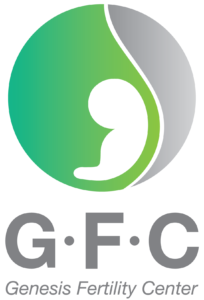What is the basis of measuring embryo grading?
Embryo grading is important for the success of ICSI and IVF
When it comes to the process of selecting embryos, it is considered an important step in the IVF/ICSI procedure. Many couples who face fertility issues and wish to have children often ask how we can determine whether an embryo is of good quality before it is transferred into the uterus. This is because the success of pregnancy to a certain extent depends on the quality of the embryo.
Firstly, couples who experience difficulty having children and wish to undergo IVF/ICSI treatment should understand that after fertilization with sperm, the eggs will be taken to the laboratory and the embryos will be cultured by embryologists who will closely monitor the development of the embryos. The embryo development period takes about 5–6 days, during which the embryos are graded into 2 stages as follow:
1. Cleavage
The cleavage stage is the stage in which the embryo undergoes cell division. It occurs 24–72 hours after the egg and sperm have been fertilized, and continues until no later than day 4 until grading. The grading is based on the international standards of the Istanbul Consensus Scoring System 2011, which takes into consideration the symmetry of the cells. The grading of this stage is divided into three groups as follows:
- Cleavage Grade 1 (GOOD) is an embryo with blastomeres that divide evenly into a spherical and symmetrical shape with similar sizes. There is minimal or no fragmentation (abnormal small cell fragments in the embryo), or if present, it is less than 10%. These embryos are considered Grade 1 and have a high potential to develop into blastocysts.
- Cleavage Grade 2 (FAIR) is an embryo with blastomeres or cell division that have slightly different sizes and uneven distribution. Fragmentation is present in approximately 10–25% of the embryo.
- Cleavage Grade 3 (POOR) is an embryo with blastomeres or cell division that have significantly different sizes and uneven distribution. Fragmentation is present in more than 25% or more than 1 out of 4, and in some cases, embryo cells may not be detected. Although they still have the potential to develop into blastocysts, the embryo cells may not be fully developed.
2. Blastocyst
When an embryo undergoes the cleavage stage, it develops into a blastocyst stage, which is a stage where the embryo grows for 5–6 days after fertilization. When the embryo reaches day 5–6, or the blastocyst stage, there is another grading of the embryo. The embryo’s grade is divided into A, B, or C in order, and this grading is based on the Gardner and Schoolcraft (1999) grading system. The blastocyst stage is divided into 6 grades, and the grading of the embryo is determined based on 3 factors, as follows:
- Expansion: The shape of the embryo cells in the blastocyst stage is divided into 6 stages of growth:
- Level 1 Early Blastocyst, the Blastocyst cavity or Blastocoel is less than half the volume of the embryo (in the Blastocyst stage, cell movement occurs to create a cavity in the embryo called Blastocoel).
- Level 2 Blastocyst, the Blastocoel is more than half the volume of the embryo.
- Level 3 Full Blastocyst, the Blastocoel is fully developed within the embryo, and the size of the embryo has increased.
- Level 4 Expanded Blastocyst, the volume of the Blastocoel is larger than the first three stages of the embryo, and the Zona pellucida or eggshell becomes thinner by half, while the size of the embryo increases.
- Level 5 Hatching Blastocyst, the Trophectoderm or outer layer of the embryo begins to protrude out of the eggshell.
- Level 6 Hatched Blastocyst, the embryo fully hatches out of the eggshell.
2. Inner Cell Mass (ICM): These are cells that will grow into an embryo and implant in the uterine wall. There are 3 grades: Grade A, B, and C.
- Grade A: Many cells are present and tightly grouped together.
- Grade B: There are fewer cells, and they are loosely grouped together with some dispersion.
- Grade C: Very few cells are present, or the Inner Cell Mass may not be visible as a group.
3. Trophectoderm: These are cells that will grow into the placenta and attach to the uterine wall.
- Grade A: Many cells are present, with uniform size and arrangement, and appear beautiful.
- Grade B: There are fewer cells, and they are loosely attached with irregular size and arrangement.
- Grade C: Very few cells are present, with small and irregularly arranged cells.
Does a low embryo grade affect pregnancy outcome?
When grading embryos for couples struggling with infertility and desiring to have a child through IVF/ICSI, the medical team evaluates and grades blastocysts based on their completeness, shape, cell number, and density in the laboratory to determine which embryo is most likely to result in a successful pregnancy. The grading system typically assigns embryos a letter grade of A, B, or C based on the evaluation of three components: 1) the shape of the blastocyst at the expansion stage, 2) the inner cell mass (ICM) that will grow and develop into the fetus, and 3) the trophectoderm that will grow and attach to the uterine wall. Once graded, scientists will carefully record each embryo’s details as they culture them. When all three components have been evaluated, the results will be combined to determine which embryo is best suited for transfer to the uterus.
Although couples who experience infertility and desire to have children may have embryos with poor grades, there is still a chance that these embryos can implant in the uterine lining and develop into a fetus. Even if an embryo with a good grade is obtained, it may have abnormal chromosomes and may not be suitable for implantation. Therefore, selecting embryos for individuals who have difficulty conceiving and want to undergo IVF/ICSI is an indicator of the chance of successful pregnancy, as follows:
- Embryos with higher grades have a better chance of successful pregnancy.
- Embryos with lower grades have a lower chance of successful pregnancy.
Criteria for transferring embryos into the uterus:
Once the embryos have been selected, the doctor will take into account the age of the patient, for example, whether they are over 35 years old or not, their reproductive history, such as having had two miscarriages, and other information. In cases where the couple has difficulty conceiving and one of them may have abnormal chromosomes, additional testing of the embryos will be conducted before transferring them into the uterus to increase confidence. Normally, blastocyst transfer is performed on day 5 or day 6, as this is considered the optimal stage for the best embryo implantation.
The process of transferring embryos to the uterus:
In this process, the doctor and the couple who are facing infertility and desire to have a child through IVF/ICSI will jointly consider the transfer of one or two embryos to the uterus to increase the chances of a successful pregnancy while reducing the chance of one embryo not developing. Although transferring two embryos increases the chances of success, it also increases the possibility of twin pregnancy, which is considered a complication of pregnancy. Therefore, the doctor will evaluate the suitability and risks of a twin pregnancy based on the overall health of the patient.
If you are a couple who is facing infertility and are considering IVF/ICSI treatment. At Genesis Fertility Center, we prioritize the best interests of our patients by ensuring that they receive the best possible embryos prior to the transfer process to maximize the chance of pregnancy. Our clinic offers comprehensive services ranging from identifying the causes of infertility, genetic testing of embryos, to selecting the appropriate treatment method that is both cost-effective and has a high chance of success, with transparent preliminary cost assessments.
Call Center 097-484-5335
Monday–Friday: 9.00–20.00 Saturday–Sunday: 8.00–20.00.



